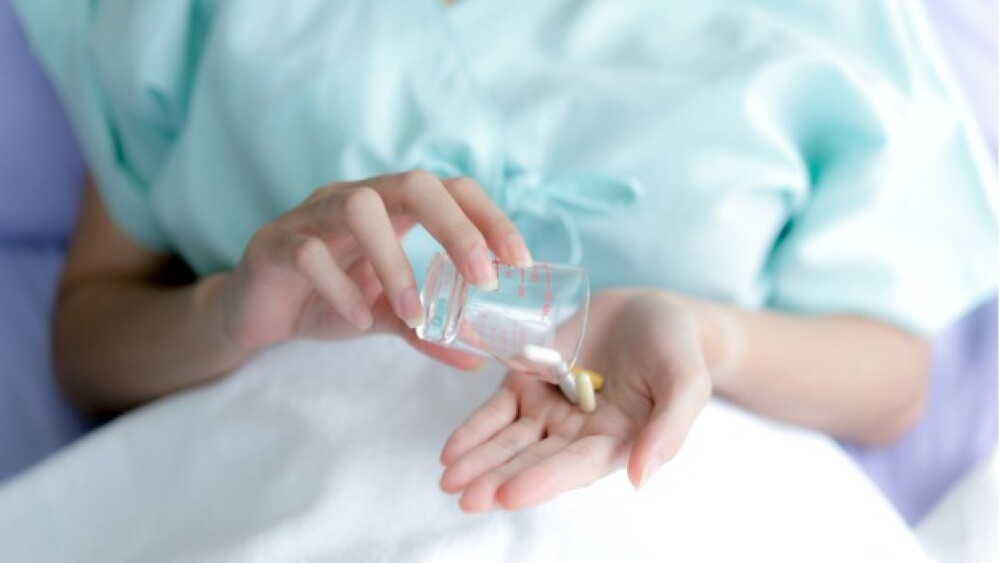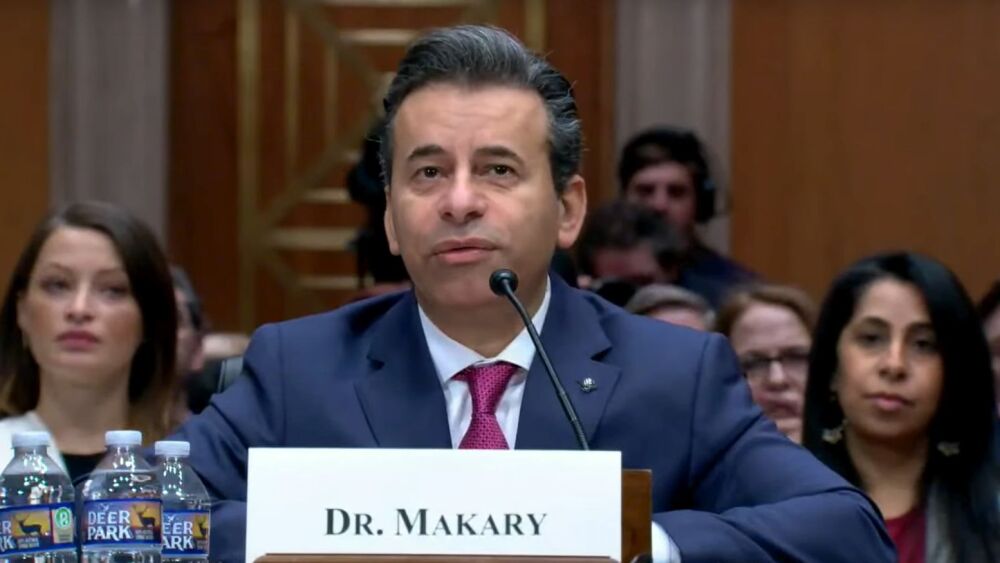The proportion of supplemental indications rated as having high therapeutic value was substantially lower than for first indications, according to a new study published Wednesday in The BMJ.
Pictured: Patient taking pills at hospital/iStock: Suphansa Subruayying
A new study published in The BMJ Wednesday has found that despite the number of new drugs being approved in the U.S. and Europe, less than half are adding true therapeutic value to patients.
The study examined a group of 124 first indications approved by the FDA and European Medicines Agency (EMA) between 2011 and 2020. Less than half, 47% in Europe and 41% in the U.S., of first indications had high therapeutic value ratings. The largest subset was for cancer disorders.
The results were more disappointing for supplemental indications compared with initial indications. Only a third of the 335 supplemental indications approved had high therapeutic value for patients. When restricted to the first three approved indications, second line approvals were 36% less likely and third line approvals were 45% less likely to have a high-value rating compared to first indication approvals.
The study’s authors concluded that information should be clearly communicated to patients and be reflected in the drug pricing when therapeutic value is not added over other available treatments.
Led by Kerstin Vokinger, professor of law and medicine at the University of Zurich, the study relied on assessing therapeutic value using ratings from European health technology assessment (HTA) groups. Currently, the U.S. does not widely use the HTA system, a potential tool for improving efficiency in healthcare.
“The lack of systematic health technology assessment in the U.S. is an important knowledge gap for decision making in the U.S. healthcare system,” Beate Wieseler, head of drug assessment at Germany’s Institute for Quality and Efficiency in Health Care, contends in an editorial linked to the study. “Some attempts have been made to close this gap, such as the value framework for cancer treatments developed by the American Society of Clinical Oncology. However, this framework covers only one aspect of healthcare—why the U.S. has not adopted HTA more widely is difficult to understand.”
The FDA and EMA do not require new drug treatments to prove value over existing treatments in order to garner approval. A positive risk-benefit ratio is needed, but not greater value.
Some healthcare stakeholders believe the system should be changed to require drugmakers to prove therapeutic benefit. Often cancer treatments are approved based on tumor response, without requiring the proof of longer survival or improved quality of life.
“This study confirms previous research on the limited or unclear added value of new drugs,” according to Wieseler, who said the findings were sobering.
Wieseler points out the importance of having multiple options for patients as side effects and responses can vary greatly from one patient to another.
Garnering supplemental indications for an approved drug is often an important, less risky strategy for pharmaceutical companies. Studies released earlier this year indicated the cost of developing a new drug now exceeds $2 billion per therapy on average.
Wieseler suggests de-incentivizing the development of drugs with similar benefits and rewarding investigational assets with proven added patient benefit, relative to the current available care, with expedited approval or prolonged market exclusivity as potential solutions.
Kate Goodwin is a freelance life science writer based in Des Moines, Iowa. She can be reached at kate.goodwin@biospace.com and on LinkedIn.






